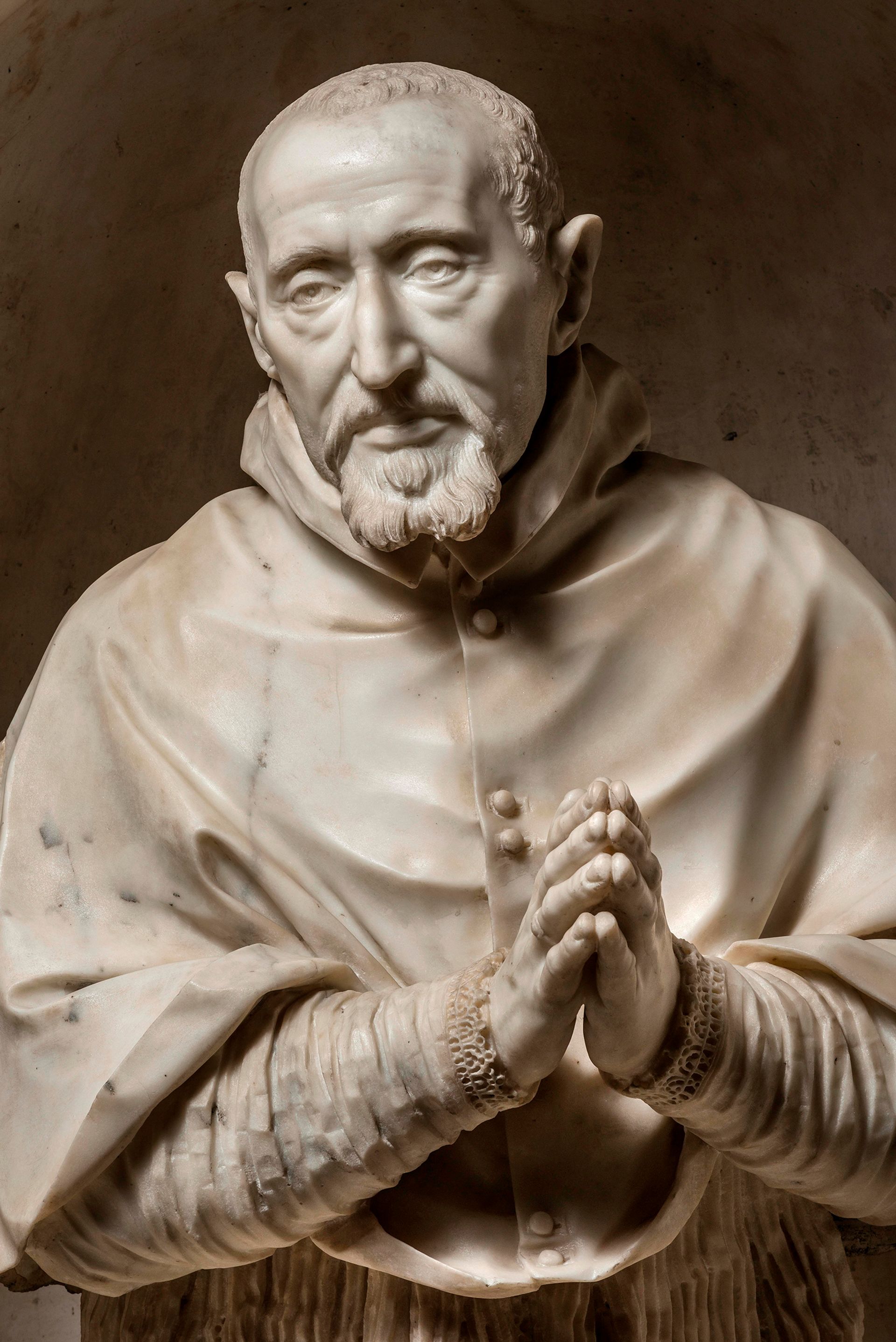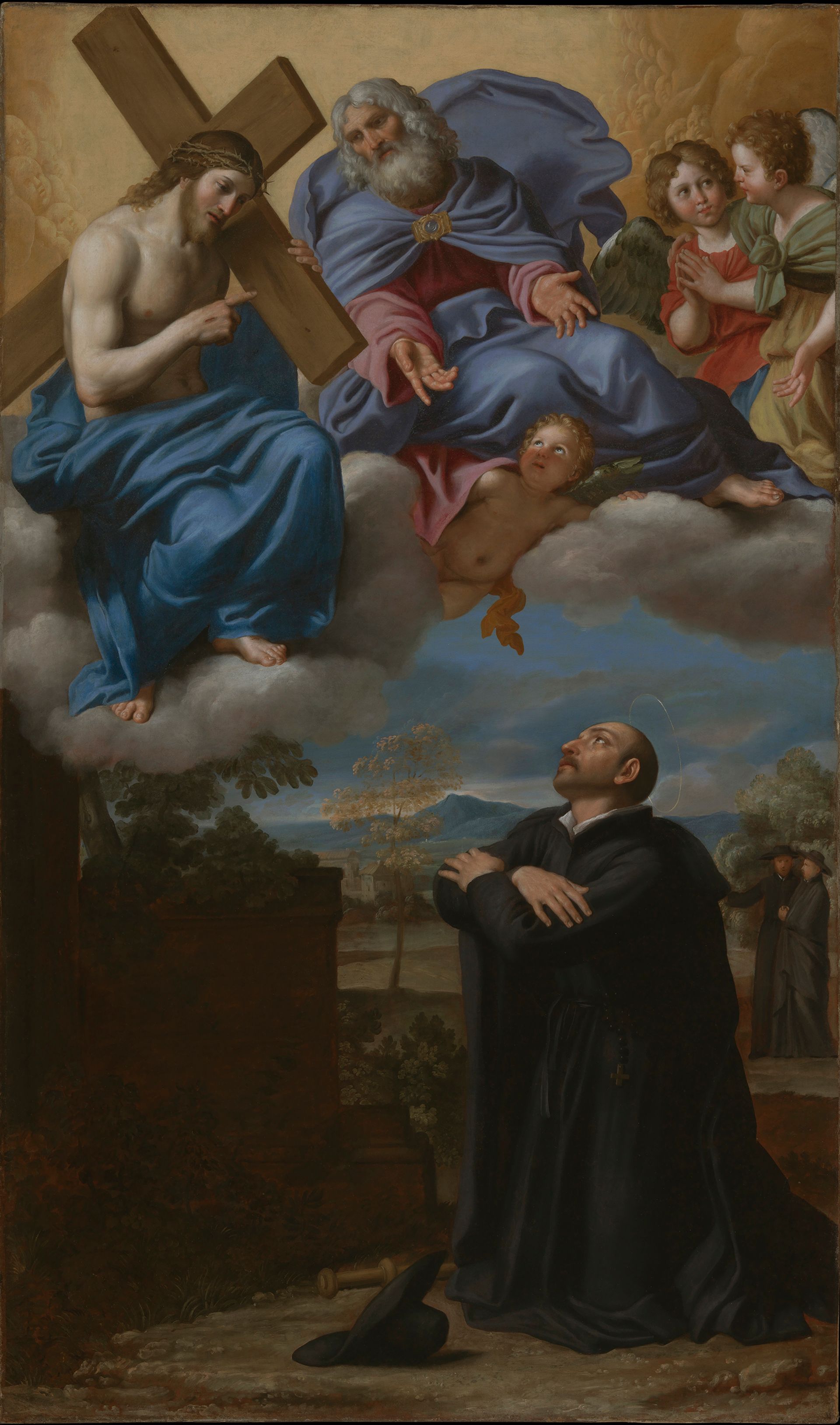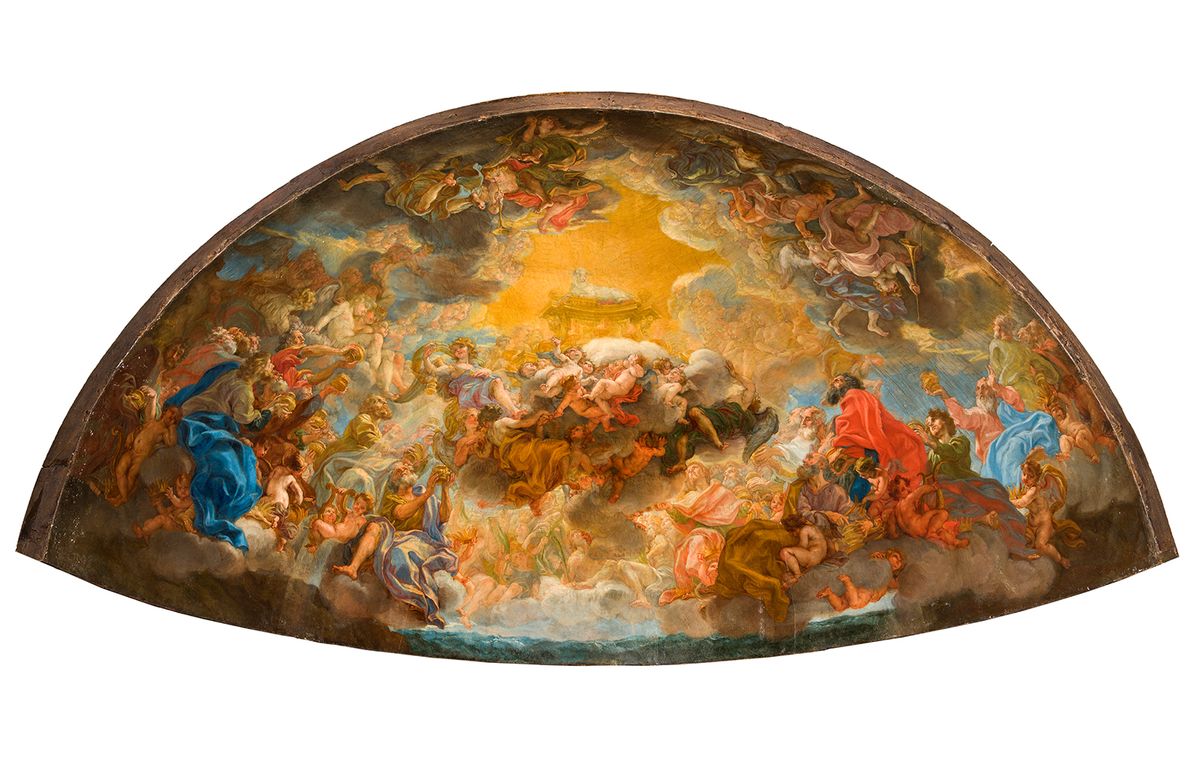In what might seem like a miracle, treasures from il Gesù, the flagship Jesuit church in Rome and a gem of Baroque architecture and art, have come to Connecticut for an exhibition opening 2 February. But the real story behind the loan show is less about divine intervention and more an example of what human initiative and creative thinking can achieve.
This academic year marks the 75th anniversary of the small, prestigious Jesuit college. Linda Wolk-Simon, the chief curator and director of the Fairfield University Art Museum, is a specialist on Raphael and his circle in Rome. Xavier Salomon, the chief curator at the Frick, serves on the exhibition planning committee. The two brainstormed on ways to mark the milestone when he suggested: “Why don’t we try to borrow the Bernini bust from il Gesù?”
That work, a large portrait of the Jesuit pioneer Roberto Bellarmino—the university’s patron saint—is one of Bernini’s “speaking likenesses” and is given pride of place beneath the church’s apse. The sculpture dates from the early 1620s, the period when Bernini, still in his 20s, sculpted the four great life-size figure groups, among them Apollo and Daphne, at the Borghese Gallery. Not only has it never left Italy, it has left the church only once.

Gian Lorenzo Bernini, Bust of Cardinal Roberto Bellarmino (1623-24), Church of the Gesù, Rome Photo: Zeno Colantoni
Since Fairfeild is a Jesuit institution, the idea was not completely far-fetched, but it took chutzpah, more so when Wolk-Simon wondered: “What else can we ask for?”
The result, The Holy Name, Art of the Gesù: Bernini and his Age, is the most ambitious show in the museum’s history, with nearly 60 objects, mostly dating from the 1680s and 1690s, many of them lent by major museums. It includes a monumental painted wooden modello of the apse and its illusionistic ceiling fresco by Giovanni Battista Gaulli. If you cannot go to Italy to see the church, go to Fairfield to see this and you will feel you were there.
The rector of il Gesù, Father Vincenzo d’Adamo, became enthusiastically engaged with the project and volunteered precious objects from the church and its museum. These include an embroidered chasuble belonging to Cardinal Alessandro Farnese, one of Rome’s ecclesiastical heavyweights, whose son Odoardo, also a cardinal, commissioned the Bernini sculpture of Bellarmino.
Wolk-Simon also assembled a board of experienced networkers who advanced the show, sometimes through serendipity. Robert Dance, another Fairfield committee member, sat next to a collector at an opening dinner at Wellesley’s art museum when the subject of the Gesù show came up. By coincidence, the collector owned a modello for one of the church’s pendentives, depicting a very buff Moses, and its loan was secured over dessert.

Domenico Zampieri, Saint Ignatius of Loyola’s Vision of Christ and God the Father at La Storta (around 1622) Los Angeles County Museum of Art, gift of the Ahmanson Foundation
When the church was built, the Jesuits were a new order, created to give a jolt of energy to the Counter-Reformation, which did not have a ready iconography. The founders of the order, Saints Ignatius Loyola and Francis Xavier, were not canonised until 1622. Decorating the vast church drew in established as well as young, cutting-edge artists, working in a pinch to produce the freshest imagery.
American museums do not collaborate enough with their Italian counterparts. Some just do not have the gumption, but there is also an exaggerated fear of the complexities and some outdated thinking about Italian reliability and standards, which indeed were once too relaxed. Today, Italian arts organisations—museums and churches alike—are modernising fast. They are more willing than ever to share their collections. They want to learn from American partnerships. The museum in Fairfield took advantage of this new spirit. Bravo!
• The Holy Name, Art of the Gesù: Bernini and his Age: 2 February-19 May 2018


